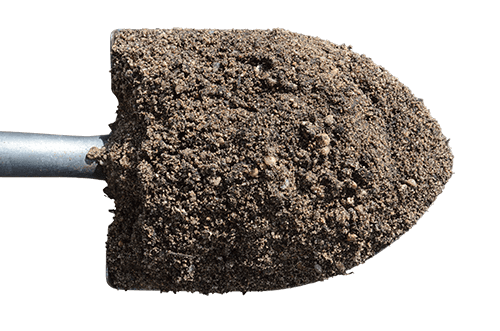Preparing your lawn for spring is much simpler than you might think! Most of these tasks are a one-time, if-needed application. Other than that, you don’t have to do much. Here is a simple guide to giving your lawn exactly what it needs to thrive this spring:
1. CLEAN
Use a rake or a blower to clear up any leaves, twigs, or other garden debris that may have been left behind from winter. You can also rake up any matted areas of your lawn to help with airflow and to help encourage growth.
2. APPLY A PRE-EMERGENT
If your lawn has a tendency to sprout crabgrass, it is important to apply a pre-emergent herbicide to help control crabgrass BEFORE the soil’s temperature reaches 50-65°F. Late April or early May is the best time to apply. Weed seeds will start germinating at this temperature so it is important to prevent this—crabgrass can be very challenging to get rid of.
Note: It is only necessary to use a pre-emergent for crabgrass if you actually have crabgrass. Not all lawns do, and if you are properly applying a pre-emergent every spring for 3-4 years, you should not have a crabgrass problem anymore and therefore will not need a pre-emergent. It is more environmentally responsible to apply a pre-emergent only if needed. If you know that crabgrass is an issue in your yard, then you will definitely want to use one. Just be sure that you don’t apply it too early, as it only works for a certain amount of time. Extremely hot weather will reduce the length of control, so again, early May is your best time frame to apply this. Some lawn companies will do split consecutive applications to increase the length of its effect. When applied correctly, however, you should only need to apply the pre-emergent once.
3. FERTILIZE
You can purchase a fertilizer that is loaded with a pre-emergent if you are looking to save money. This can also be used just one time because you don’t really need to fertilize in the spring. Grass grows fast on its own during the spring and summer months, so it needs (at most) one treatment just to “wake it up” and give it some color. If you choose to do this, avoid doing it before any storms or heavy rain, and try to use a slow-release fertilizer that will provide more nutrition in the long-run.
4. KILL
Weeds start to pop up in late spring, so you may want to apply a broadleaf weed killer. This will help control things like Creeping Charlie, clovers, and dandelions. You want to target these weeds right before they bloom, so try and apply the weed killer around Memorial Day or late May/early June.
5. MOW
Mowing your lawn about every five days is a good rule of thumb. If the grass grows too tall before you cut it, it can stunt the roots and cause your grass to reproduce improperly and have a thin, unhealthy look. Mowing often will produce a tougher turf with a greener lawn.
6. BE PATIENT
Late summer/early fall is prime time for all lawn tasks and establishing your turf. The 4-6 week period between August 15 and September 15 is going to be your best bet for laying down seed, sod, fertilizer, etc. As tempting as it might be to do these things in the spring, it is much better to wait until the fall, especially if you are using a pre-emergent or weed killer. These products stop ALL seeds from emerging, not just crabgrass and weeds! It is better to have some patience and wait for those patchy spots to fill in on their own. In the fall, you won’t need a pre-emergent because crabgrass is killed off by frost and is no longer a threat.
Spring is all about waking up your lawn after a long winter, and jump-starting it into a healthy summer. Clean it up a bit, apply a pre-emergent (if needed), fertilize (if you want), watch for weeds, and mow! Other than that, sit back, relax, and let the lawn do the rest of the work. You’ll have plenty of work to do in a few months.





